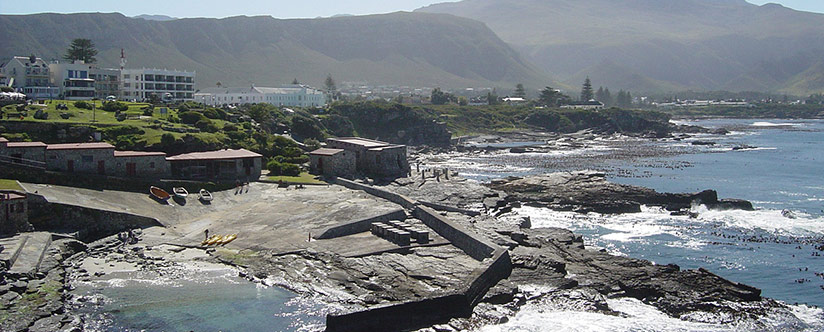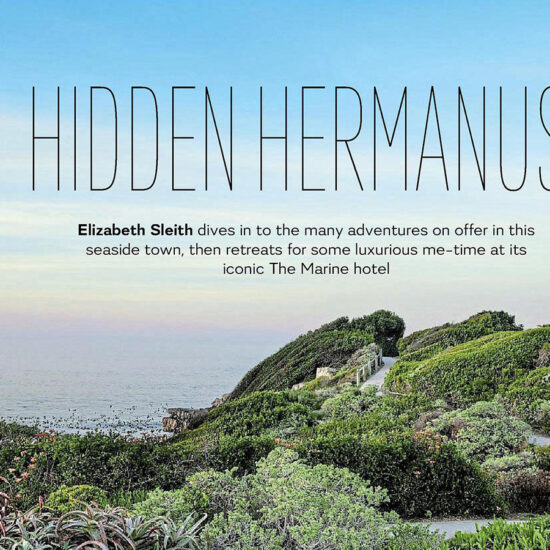Hermanus

The town of Hermanus “proper” sits on the western cove of Walker Bay between magnificent sea cliffs and the Olifantsberg. Hermanus Pieters, an itinerant teacher of Caledon farmers’ children, was the first permanent resident in the early 1800s. Having come across a fresh spring and greener pastures he settled on the shore of this enchanting bay. The news of good summer grazing spread to the surrounding areas and soon farmers from neighbouring districts would come in the summer months, bringingtheir livestock to benefit from the fresh grazing and carting their families along to enjoy the sea. The spring came to be known as Hermanuspietersfontein but was shortened to Hermanus when municipal status was given to the town in 1904.
The bay was named after a Royal Naval officer called Walker. The farmers may have discovered Hermanus, but it was the fishermen who settled here. With an abundance of fish, the village attracted more and more families. By the early 1900s word of the excellent fishing, outstanding beauty and “healing” air had spread across the world. It even became fashionable for Harley Street doctors in London to prescribe visits to Hermanus’ “champagne air” to their patients. Hermanus was, and is, an excellent holiday venue. One of the first regular visitors to Hermanus was Sir William Hoy, general manager of the South African Railways. He was so taken by the tranquillity of the village that he saw to it that the Bot River railway line never reached Hermanus. His legacy lives on in the Hermanus Station that has no lines or trains and the hill that lies in the middle of the village, Hoy’s Koppie, where he and his wife are buried. Hoy’s Koppie not only provides an easy walk though fynbos to a lookout point over the village, but is also an important link to the earliest inhabitants of the area, the Khoisan. Klipgat Cave, a large overhang on the southern side of the koppie, has archaeological evidence of these indigenous people inhabiting the cave long before Hermanus Pieters came across it.
Hotels were quickly built to accommodate the demand for holiday lodgings. The first hotel was the Astoria Hotel, now Astoria Village; followed by the Sanatorium (now the Windsor) and then the Marine Hotel which was built in 1902. The growing village soon needed the infrastructure required by a burgeoning and stable community – churches were built, a school, magistrate’s courts, a new post office, police station, and even a new harbour.
Tourism is still the cornerstone of Hermanus’ economy, but today visitors have a selection of venues to choose from. In addition to the hotels there are many guesthouses, self-catering cottages and backpackers’ lodges offering visitors excellent hospitality.
- IncludedHermanus
- Not IncludedNatureRelaxationHobbyEnthusiastsFamily-fun




